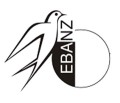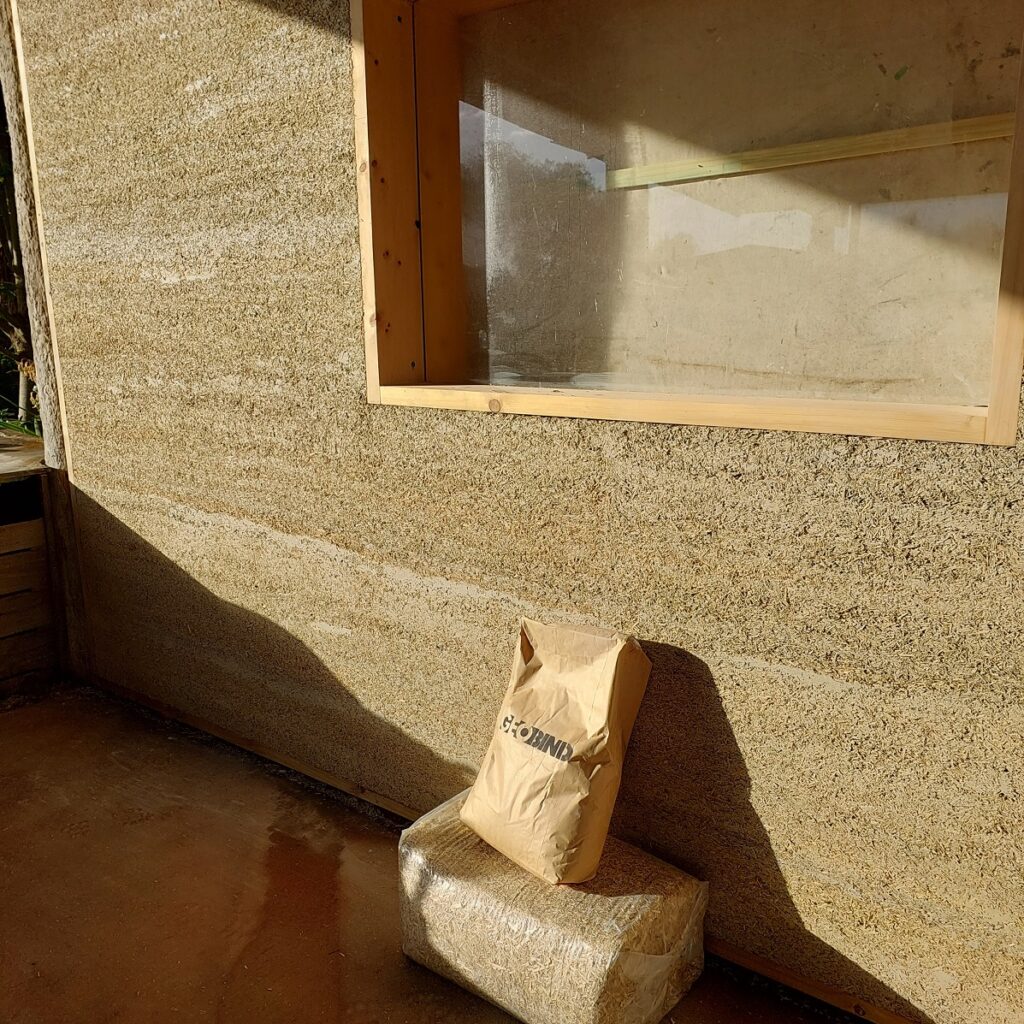Photograph provided by GEOBIND LTD
Hempcrete is a mixture of the chopped stem of the hemp plant after the fibres have been stripped out, known as hurd or shiv, and are mixed with some form of binder. The lime-based binders in hempcrete are proprietary mixes that tend to be commercially sensitive, often imported, and based on a blend of hydrated lime and hydraulic lime or cement.
A moist mixture of the material is tamped around a timber framework between temporary shutters, to make infill insulation in walls up to 300mm thick timber framed walls. It is plastered on the outside with a lime plaster and inside with an earth or lime plaster to make a complete wall system, similar to the light earth building method or LEM (Light Earth Mix)
If clay slip is used solely as the binder then the product becomes a form of LEM. Hempcrete can be slow to dry out thoroughly so the time of the year that construction is undertaken, and allowing time for complete drying, needs to be carefully considered with this building method.
Using lime rather than clay has a few downsides. Firstly, hydrated lime and other cements are high in embodied carbon emissions. They are created in a kiln that drives off carbon dioxide, and that will usually be fired with fossil fuels, whereas clay is often simply dug from the site. Secondly, lime is caustic, and as such it is hazardous to work with. Lime does re-absorb some CO2 as it cures, and the lime binder is not as moisture sensitive as clay.
In saying this, although it is not quite as good as LEM for the environment, hempcrete still has the potential to be nett carbon sequestering, due to the large amount of fibre used. As a potential carbon sequestering building method, hempcrete is definitely one of the solutions in the negative carbon building arsenal of the future, although it would be even better to use hemp-clay instead.
There is a burgeoning hemp industry in New Zealand, and it is a useful crop that can be used in multiple products. The seeds can be turned into health consumables, the fibres into high quality textiles, and the leftover hurds or shiv can become the fibre in LEM or hempcrete.
In hempcrete, the fibres are bound together as a semi-structural insulation material, i.e. the hempcrete itself will not hold up the roof, but it may support plaster or render.
The binders are typically proprietary products from overseas, but there have been ‘DIY’ recipes used, but some local lime binders and non-lime based binder products are becoming available. We also have all the ingredients for a high quality hemp industry here, that could then provide shiv, a very useful waste product from hemp stems, that can then be used to make good quality buildings.
Please also refer to the LEM section for more information, as most of the content there is also relevant here. There is an informative Appendix D in 4299:2020 on LEM, to help guide those designing, building, or approving work with this technique. Hempcrete as such is not included.

